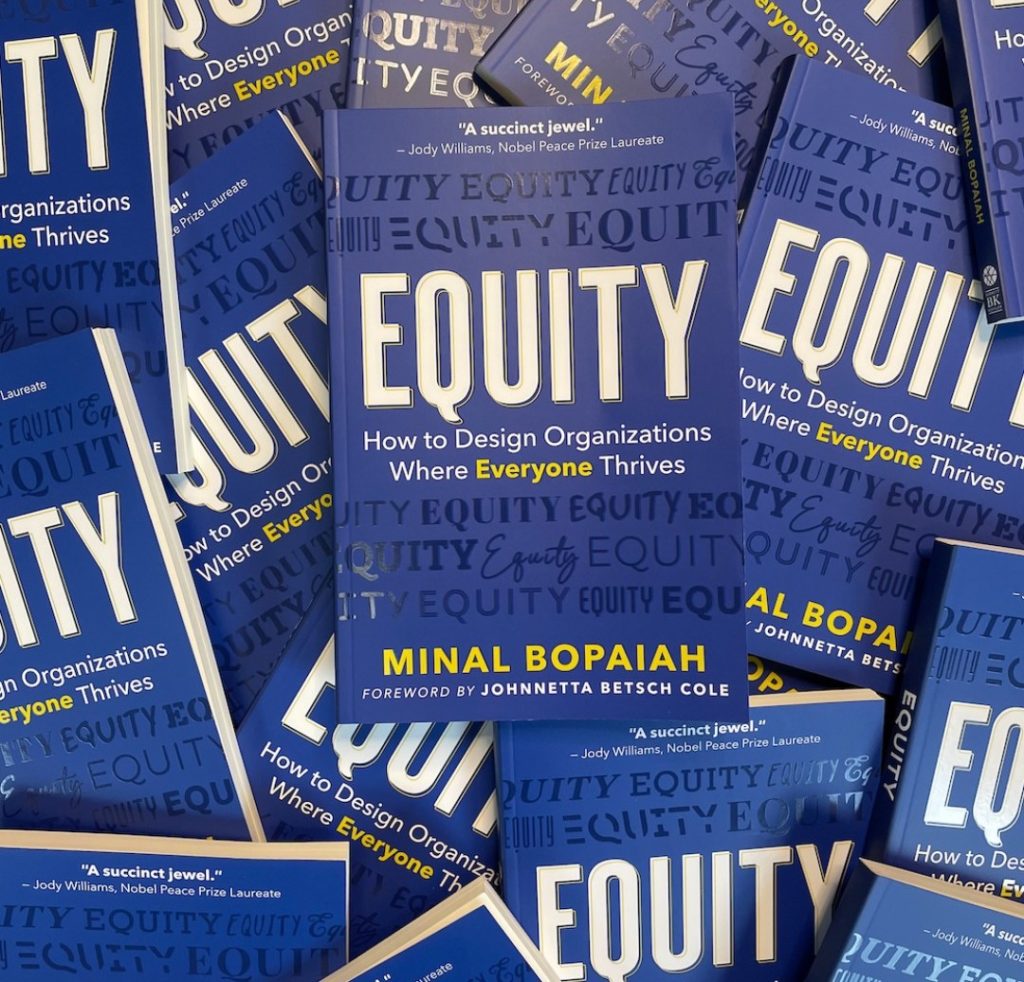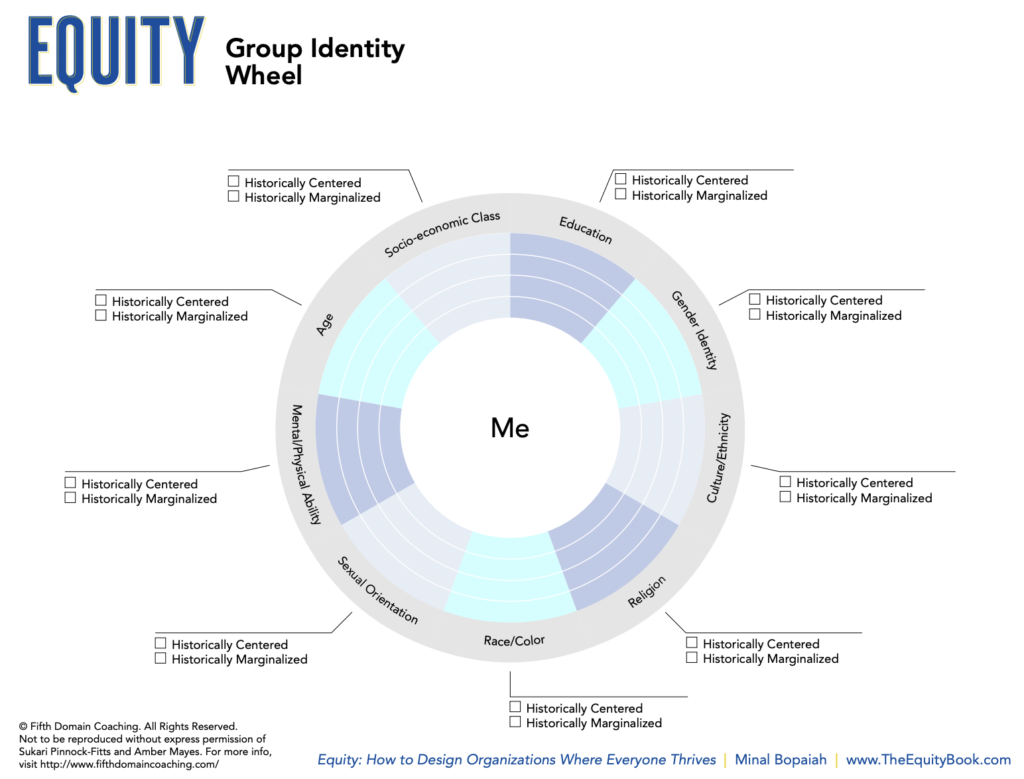The release of Minal Bopaiah’s succinct and informative guide, Equity: How to Design Organizations Where Everyone Thrives is an important push for companies to re-evaluate their DE&I. Bopaiah seamlessly discusses DE&I, or IDEA as she refers to it (inclusion, diversity, equity and accessibility) strategies if organizations truly want to integrate equity in their work culture. Bopaiah started a strategy and design firm called Brevity & Wit that consults with companies to improve their IDEA strategies. If you are looking for a full evaluation of your current DE&I practices and how to make them more equitable, it’d be a great strategy to hire their firm. If hiring an outside firm might not be possible at the moment for your organization but you’re still looking to make positive equitable changes, here are a few strategies from the book that you can incorporate:
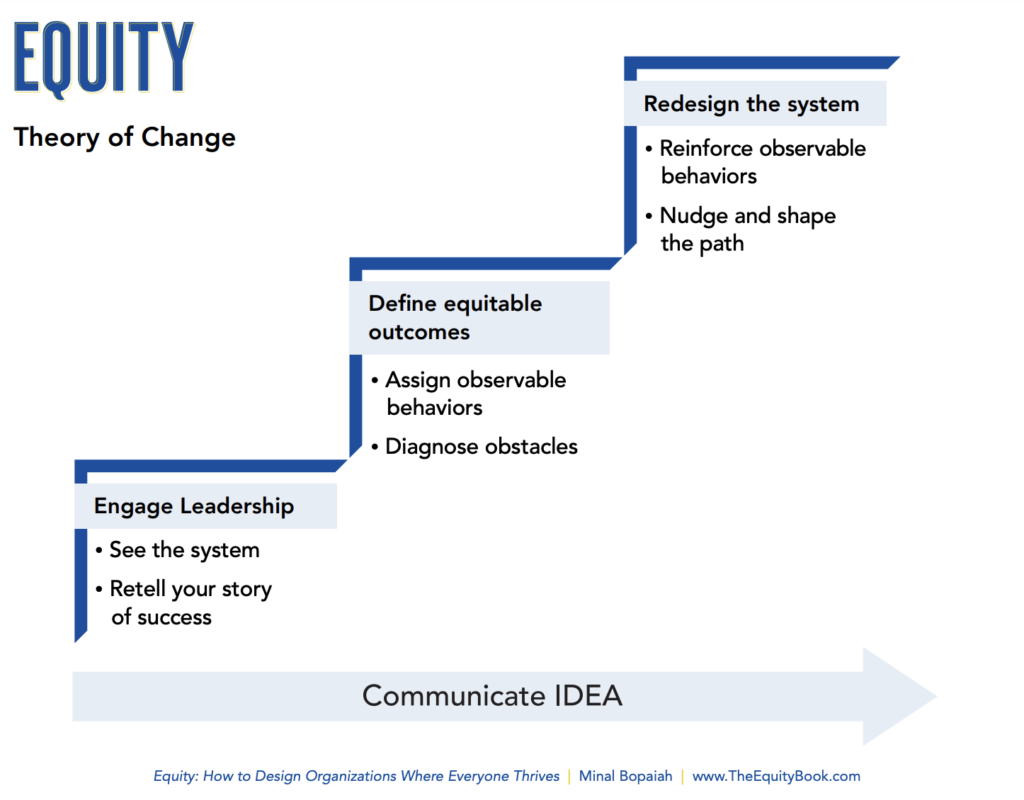
Brevity & Wit uses this theory of change to begin the process of creating an equitable workforce. It begins with engaging leadership, defining equitable outcomes and then re-designing the system. This series of steps, that should be completed in that order, is an effective way to make equitable changes in your organization while making sure that they are sustainable. Bopaiah states that, “this theory of change will help create an organization whose impact can then be felt in the wider system and culture throughout media and marketing”. The next strategy, Define and Diagnose, can be completed alongside the Theory of Change to make sure that your equitable outcomes are achievable.
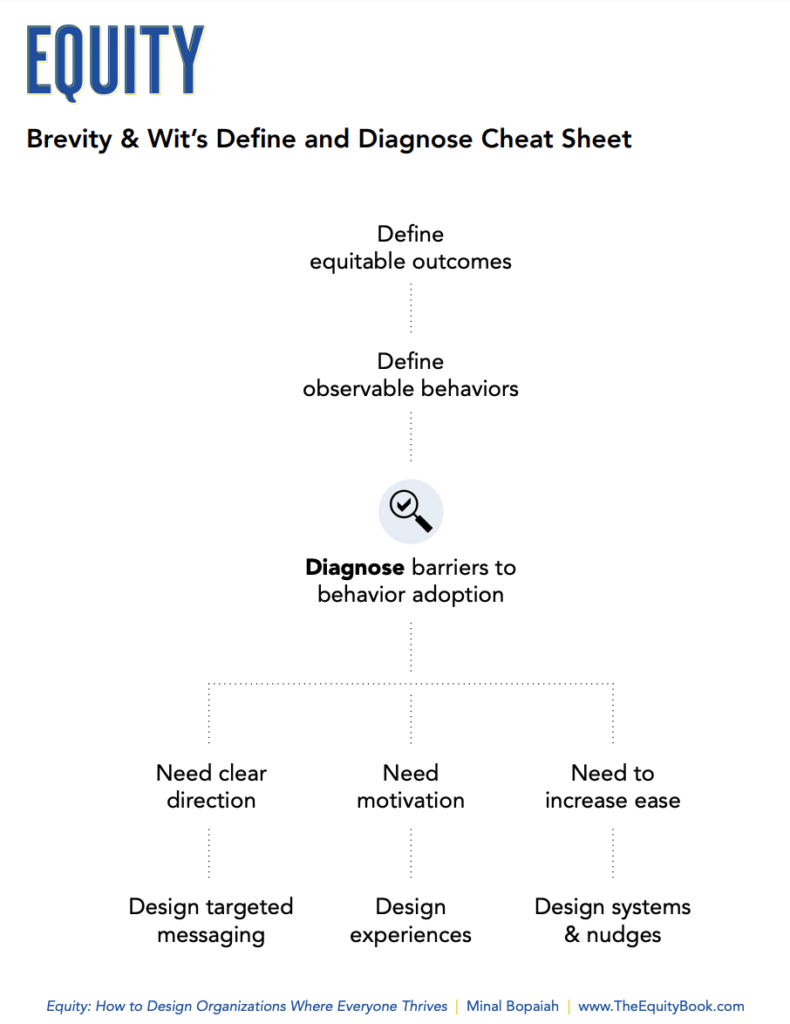
Although the Theory of Change seems like an easy transition, there are steps that are needed to ensure that all obstacles to creating an equitable organization are addressed. The “Define and Diagnose” cheat sheet below helps create the equitable outcomes that your organization is looking for while making sure that all challenges are thought of beforehand. In Equity, Bopaiah emphasizes that “the bridge between more equitable outcomes and measurable results is observable behaviors”. By diagnosing obstacles to behaviors you want in your organization, it will be easier to implement those strategies. You don’t want to create a great equitable outcome and come to find that it is impossible to carry out or even unnecessary to the needs of a group or organization.
The Group Identity Wheel is a great strategy for leaders, or even each individual, in an organization to complete in order to assess their privilege. Whether someone is historically centered or historically marginalized in a certain category, having your privileges written out will help employees gain more awareness. Bopaiah states that, “equitable leaders are skilled at seeing systems and understanding interdependence”. By knowing all of the different types of people and privileges within your organization, it can be easier to create an equitable system that can benefit everyone. After all, an important quality in feminism is intersectionality. The same goes for organizations that want to be more equitable – you need to be conscious and implement the intersectionality of all their employees.
Evaluate Your Content Representation
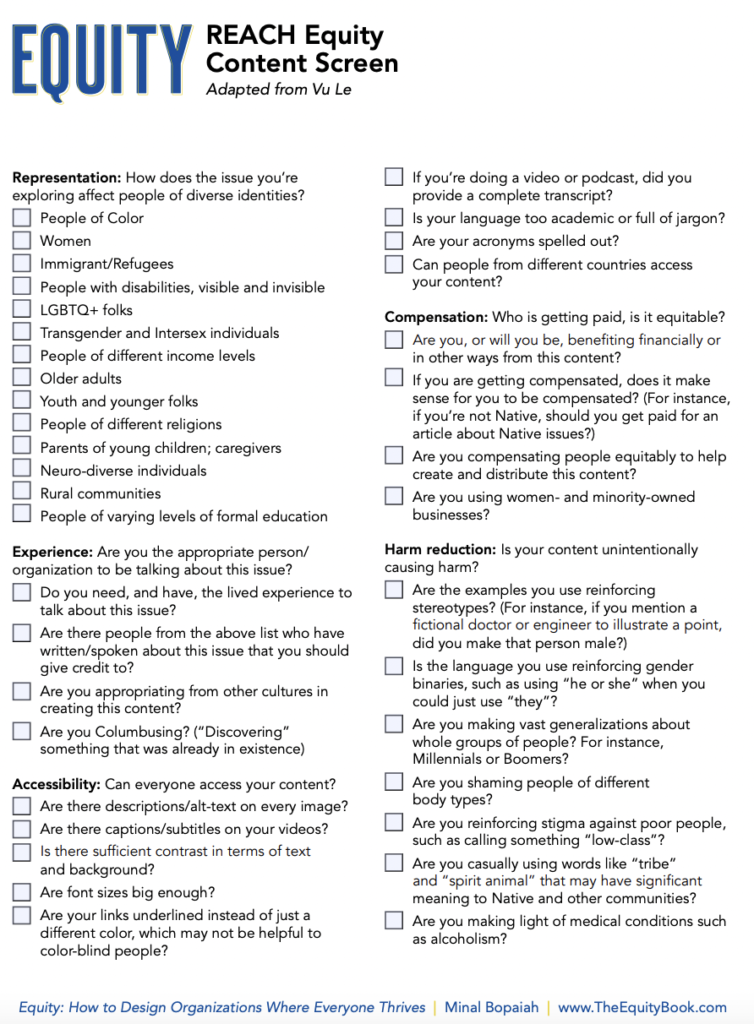
Ah, the media. We have all seen and experienced the influence that the media can have on the public. Whether it’s feeling discouraged when you don’t see equal representation or, on the flip side, feeling like an organization is tokenizing people of color in their marketing, having equitable media and content representation is crucial. Bopaiah shares a fantastic checklist below on how to evaluate the following categories in your media: representation, experience, accessibility, compensation and harm reduction. All of these areas of media need to be addressed – How does the issue you’re addressing affect BIPOC? Is your media accessible to everyone? Does your content unintentionally cause harm? Are the people working on your media getting equitable pay? Are the appropriate people or groups working on your content? These are a few of the big questions to ask but a good starting point. It’s okay (and encouraged) to own up to mistakes made in the past when it comes to content representation and make sure that you’re doing what is right to change it for the present and future.
The way to start creating an equitable organization is by talking about it. It can be an uncomfortable topic for many people but not only is it important, it is necessary. Uncovering implicit biases, breaking down discriminatory systems and calling out unethical behavior comes with the task of creating an equitable organization. It’s not easy but it’s worth it. Click here for Bopaiah’s discussion guide with questions about the book, IDEA concepts and ways to get not only yourself but your organization involved in creating equitable change.
If you want to learn more about Equity, read Tayler’s great post that summarizes her thoughts and reviews the book! Click here to download these resources and learn more about Equity. Thank you Minal Bopaiah for this fantastic guide that every leader in the workplace should read.

